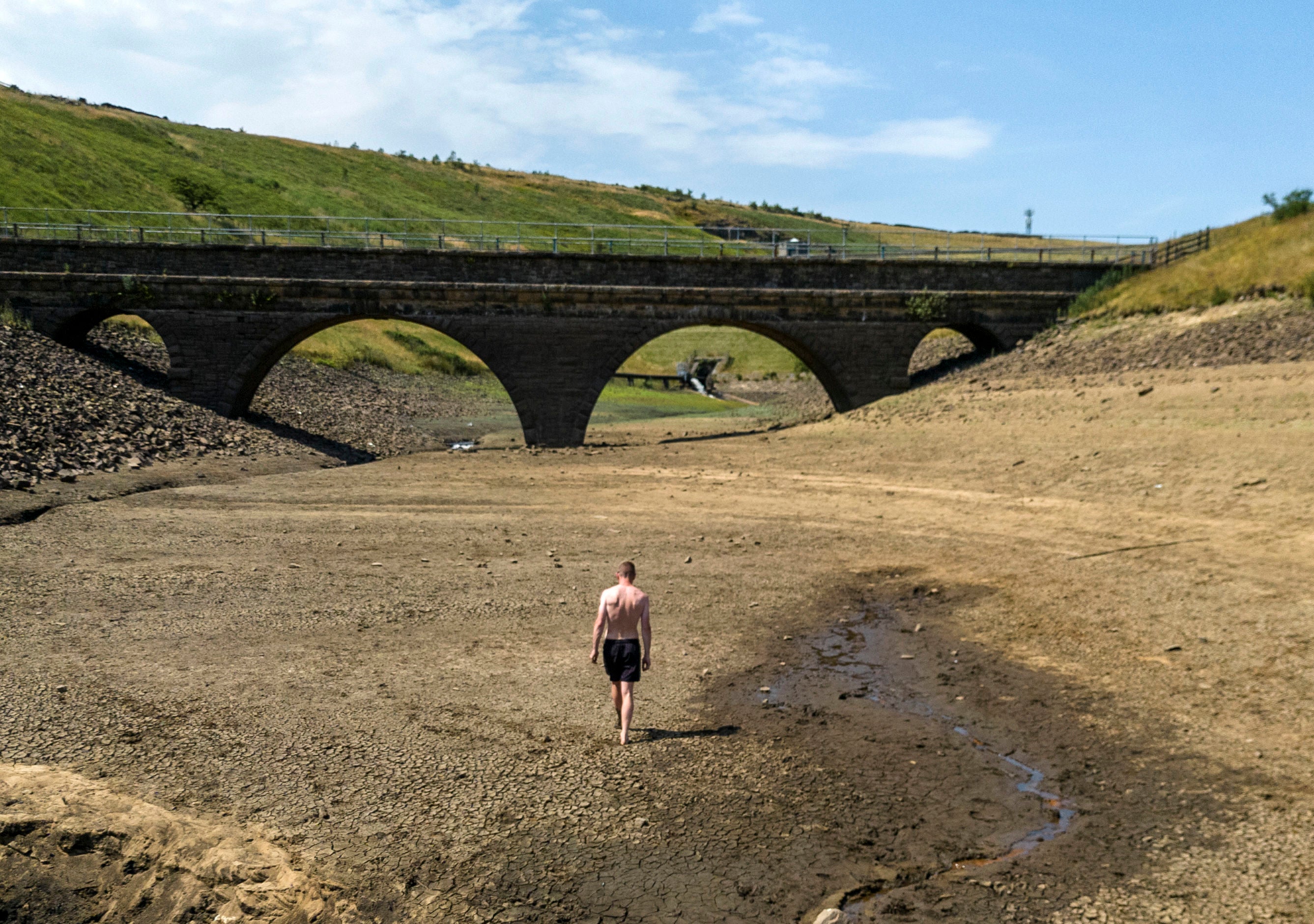Almost 1,000 people may have died due to UK heatwave temperatures, analysis finds
The estimate was calculated using forecast temperatures and a previous analysis of temperature-related mortality risk in different parts of England and Wales

Your support helps us to tell the story
From reproductive rights to climate change to Big Tech, The Independent is on the ground when the story is developing. Whether it's investigating the financials of Elon Musk's pro-Trump PAC or producing our latest documentary, 'The A Word', which shines a light on the American women fighting for reproductive rights, we know how important it is to parse out the facts from the messaging.
At such a critical moment in US history, we need reporters on the ground. Your donation allows us to keep sending journalists to speak to both sides of the story.
The Independent is trusted by Americans across the entire political spectrum. And unlike many other quality news outlets, we choose not to lock Americans out of our reporting and analysis with paywalls. We believe quality journalism should be available to everyone, paid for by those who can afford it.
Your support makes all the difference.Nearly 1,000 people could have died due to high temperatures during last week’s heatwave, a scientist has estimated.
Antonio Gasparrini, a professor of biostatistics and epidemiology at the London School of Hygiene and Tropical Medicine, said he had estimated that England and Wales could expect to see 948 excess deaths, the vast majority recorded among those 85 or over, between 17 July and 19 July.
The estimate was calculated using forecast temperatures and a previous analysis of temperature-related mortality risk in different parts of England and Wales.
Professor Gasparrini said thanks to the early warnings put out by the Met Office and the government the excess deaths may in reality turnout to be lower. The Met Office issued its first extreme heat weather warning, and the government announced the first national heatwave emergency for 18 and 19 July.
But he said his estimate could help to measure the impact of early warning systems and government policy on the number of excess deaths. It was also important, he said, to provide timely estimates of the impact of the heatwave.
It will take weeks for the full impact of the heatwave - including the true figure of excess deaths - to be established.
The UK smashed through all-time temperature records on 19 July, with the mercury hitting 40.3C in Coningsby in Lincolnshire.
On Thursday, the UK Health Security Agency published data that showed that patient attendance at an emergency department for heat or sunstroke spiked on 18 and 19 July to nearly 150 daily daily attendances, compared to a baseline of around 10 daily attendances in the days before and after the spike. The agency found that attendances increased across all age groups and regions but have subsequently returned to expected levels.
Professor Gasparrini said he began working on the estimate before the heatwave had even struck the UK and posted his initial estimate on Twitter on 19 July. He later revised the dates, and therefore numbers of excess deaths, in his estimate to include 17 to 19 July, rather than just the 18 and 19, because those were the days when a widespread heatwave was recorded by the Met Office.
He told The Independent he hoped the modelling may help to build up a framework whereby heat early warning systems can be informed by forecast impacts on health and excess-mortality risk, as well as temperature forecasts. And that that could be done at a localised level.
Professor Gasparrini’s analysis has yet to be published by a scientific journal and Professor Gasparrini described it as “experimental.”
He said that according to his previous research published in The Lancet Planetary Health journal looked at temperature-related mortality risks in England and Wales.
He gave the example of London, where he said the minimum temperature where heat-related excess deaths could happen was around 19C on average, and that any increase in temperature above that could increase the number of excess deaths.
“When the temperature is much higher as during this heatwave, this risk increases and increases and increases and therefore you have a bigger impact compared to a moderately hot day,” he said.
But he stressed that there was potential that his previous analysis of health impact risk would not apply exactly to the heatwave period.
“As you know a lot of warnings and a lot of interventions were taken before and during the heatwave,” he said.
Join our commenting forum
Join thought-provoking conversations, follow other Independent readers and see their replies
Comments